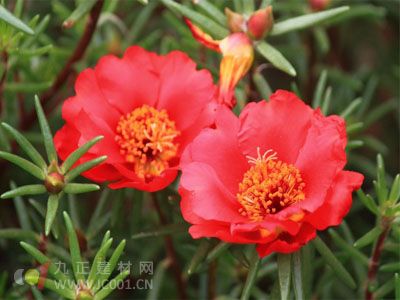Scutellaria barbarum Identification:
Scutellaria barbata, commonly known as Chinese skullcap, is a herb that typically grows to a height of 15-40 cm. The plant has a smooth or hairy stem, with the roots being slender and fibrous. The stem is quadrangular in shape and features a dark purple or brownish-green surface. The leaves are opposite, short-stalked or nearly stalkless, with a lanceolate or narrowly lanceolate shape. They have a wedge-shaped base and may have a few blunt teeth along the edges. The upper surface of the leaves is dark green, while the lower surface is lighter, and the leaves feel crisp and brittle when touched.
The inflorescences grow at the branches, and the flowers have two-lipped corollas that range from brownish yellow to dark blue-purple, approximately 1.2 cm long. The corolla is often found detached from the plant, leaving behind a spoon-shaped base and a helmet-like structure. The fruit contains four spherical nutlets that are light brown in color. The entire plant is soft and easily broken, with a bitter taste. It is preferred to use the fresh, bitter variety for medicinal purposes.
Microscopic Identification:
When examining the leaf surface under a microscope, the epidermal cells appear elongated and polygonal, with wavy vertical walls. The upper epidermal cells are larger, measuring 55–93 μm in length and 14–40 μm in width, while the lower epidermal cells are smaller, ranging from 25–48 μm in length and 11–25 μm in width. Non-glandular hairs are usually 1–2 cells in length, conical in shape, with ridged walls and a radial pattern on the base. Near the leaf margins, non-glandular hairs can be 1–3 cells long, reaching up to 141 μm in length. Glandular scales are more abundant on the lower surface of the leaves. The glandular heads are round or oval, composed of 7–8 cells, with a diameter of 50–75 μm. Glandular hairs are also present, with their heads consisting of about 28 μm in diameter and a single cell in the stalk. Stomata are observed on the lower epidermis, with a straight axis.

Physical and Chemical Identification:
1. Take 10 grams of the powdered sample and add 50 ml of 80% ethanol. Heat it on a water bath for 30 minutes, then filter while hot. Use the filtrate for further tests.
2. Add a small amount of magnesium powder and 4 drops of concentrated hydrochloric acid to 1 ml of the filtrate. A reddish color will gradually develop, indicating the presence of flavonoids.
3. Add 1–2 drops of 1% ferric chloride solution to 1 ml of the filtrate. The solution turns dark green, confirming the presence of phenolic compounds.
4. Evaporate the remaining filtrate on a water bath until dry. Dissolve the residue in 5 ml of 5% hydrochloric acid and filter. Add 1–2 drops of cesium iodide, potassium iodide, and tungstic acid solutions to three separate test tubes. A precipitate forms in each, indicating the presence of alkaloids.
5. For thin-layer chromatography (TLC), take 2 grams of the powdered sample (20 mesh) and extract it with 10 ml of ether by refluxing for 30 minutes. Decant the ether and dissolve the residue in 15 ml of methanol, then reflux again for 30 minutes. Cool, filter, and use the filtrate as the sample. Apply 10 ml of the sample onto a TLC plate coated with silica gel H (Huangyan Fluorescence Chemical Plant) and 0.5% CMC. Activate the plate at 110°C for 30 minutes. Develop the plate using a solvent system of toluene-ethyl formate-formic acid (3:3:1). Spot the samples and observe under a UV lamp at 365 nm after a development distance of 12 cm.
P20*P20 Transparent LED Screen
P20*P20 Transparent Led Screen,P20 Led Transparent Display Screen,P20 Transparent Led Screen,Transparent Led Display
Shenzhen YuGuang New Material Co.,Ltd , https://www.ygsmartfilm.com